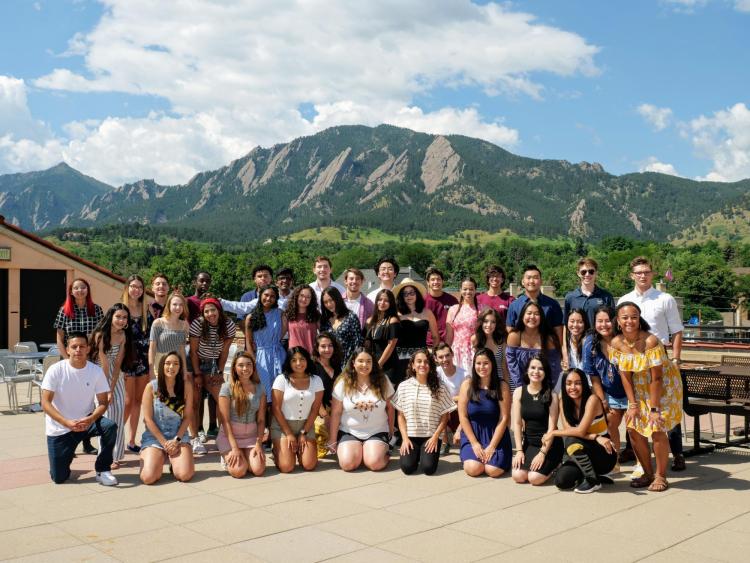PEAC 2019 Recap

This year we had around 150 applicants for PEAC and accepted a cohort of 40 students. The students came from 38 different high schools with an impressive average high school GPA of 3.8 (unweighted). About 60% of the students are first-generation college students and 95% are Colorado residents. Despite the intensity (and exhaustion) of the summer bridge, this cohort was certainly up to the challenge and truly impressed the directors, instructors, and student-staff alike. In terms of student-staff, this was the third year of the PEAC peer mentoring program. This newer model employs current MASP students to serve a hybrid-role as both residential advisors and learning assistants. Throughout the entire four weeks of PEAC, peer mentors live in the dorms, take classes alongside PEAC students, and, most importantly, help PEAC students build an inclusive community by learning to lead by example.
As always, PEAC stresses intentional community building inside and outside of the classroom. In addition to many on-campus community-building activities such as a scavenger hunt and field day, we provided the new cohort with a host of engaging programming including the CU Outdoor Challenge Course, the Colorado Shakespeare Festival, white water rafting in Idaho Springs, and hiking at Brainard Lake. These fun activities complemented our course programming to create the intense academic and social experience that makes PEAC so effective.
The current PEAC curriculum mirrors the general education requirements for all Arts & Sciences students regardless of major. This summer the courses were: Statistical Methods (Quantitative Reasoning), Writing: Vision and Voice (Written Communication), Chemistry (Natural Sciences), Sacred Spaces (Humanities), and Sociological Perspectives on Race and Ethnicity in the U.S. (Social Sciences). In addition to five formal classes, PEAC students also participated in several immersive enrichment activities. This year they participated in an interactive tour of Norlin Library, a guided buoyancy lab with the Astrophysics department, and a two-day ceramics workshop (facilitated by a current MFA student) where they explored the concept of community through art and handcrafted their own ‘vessel of community’ art pieces. Lastly, all PEAC students took a (non-graded) course called CU 101: The Hidden Curriculum. This class introduces students to the ins and outs of undergrad and guides students to success at CU.
Overall, it was an amazing and challenging month for all involved. As the Fall semester progresses, the new cohort has settled into their first year and transitioned from PEAC students to MASPians. We are looking forward to guiding them throughout their journey at CU. And now MASP is off to plan PEAC 2020!


